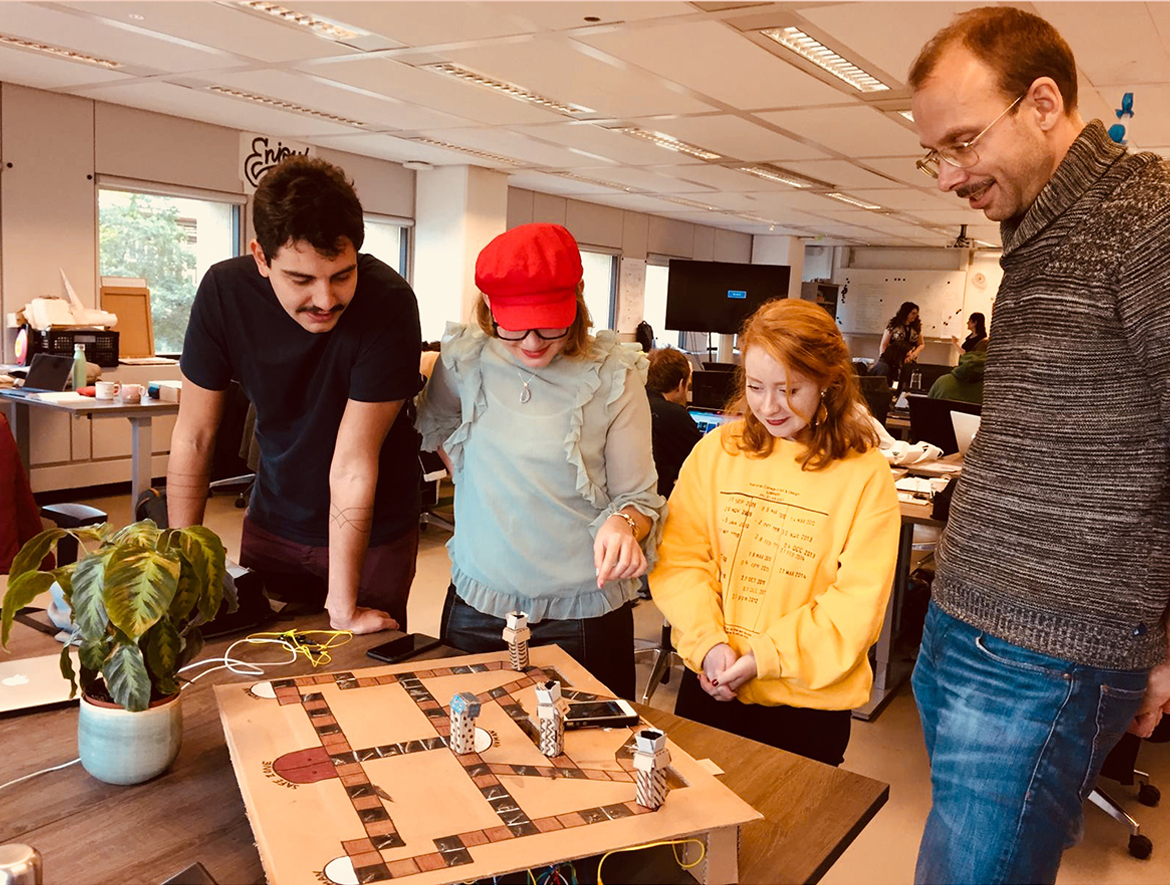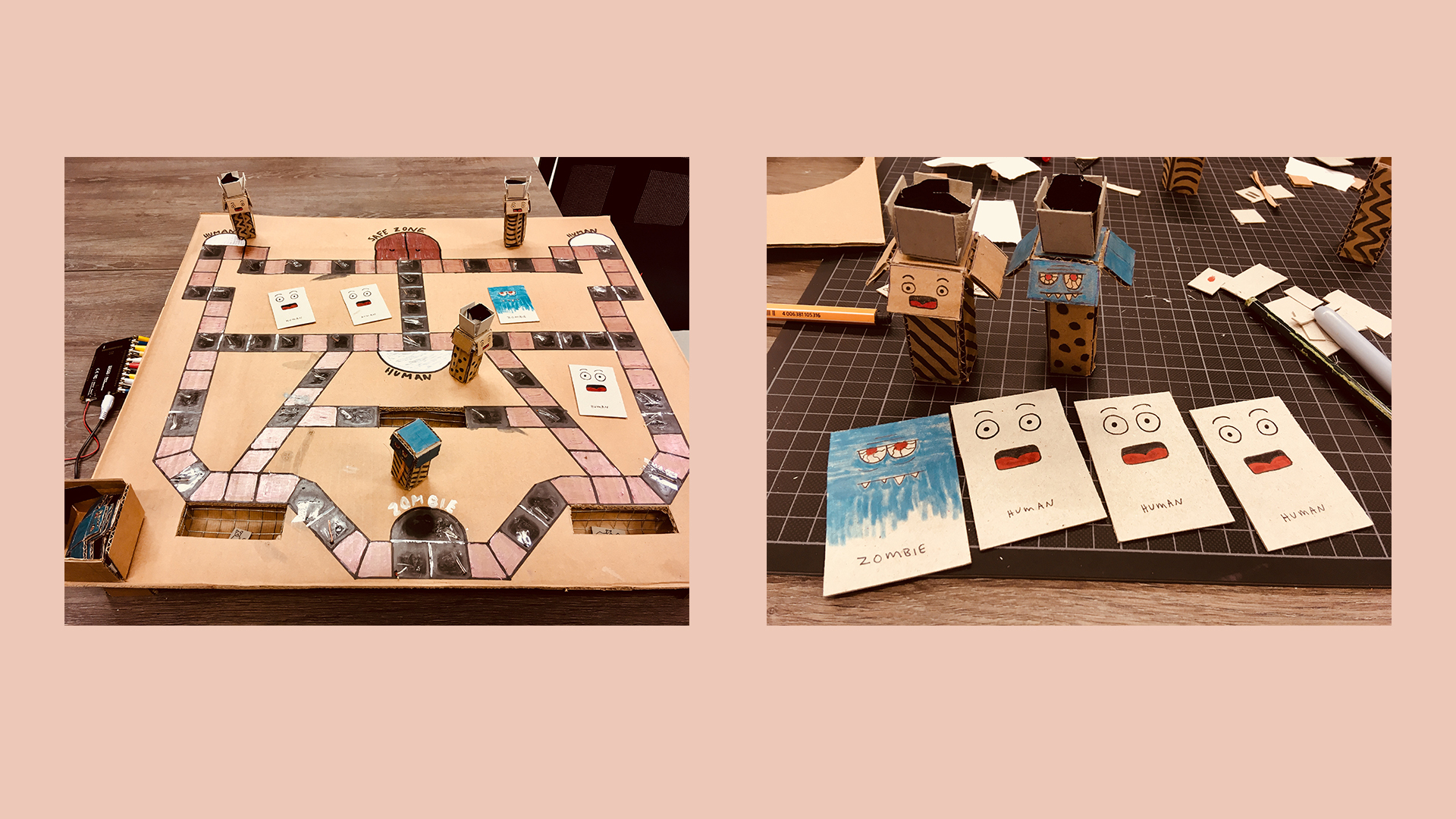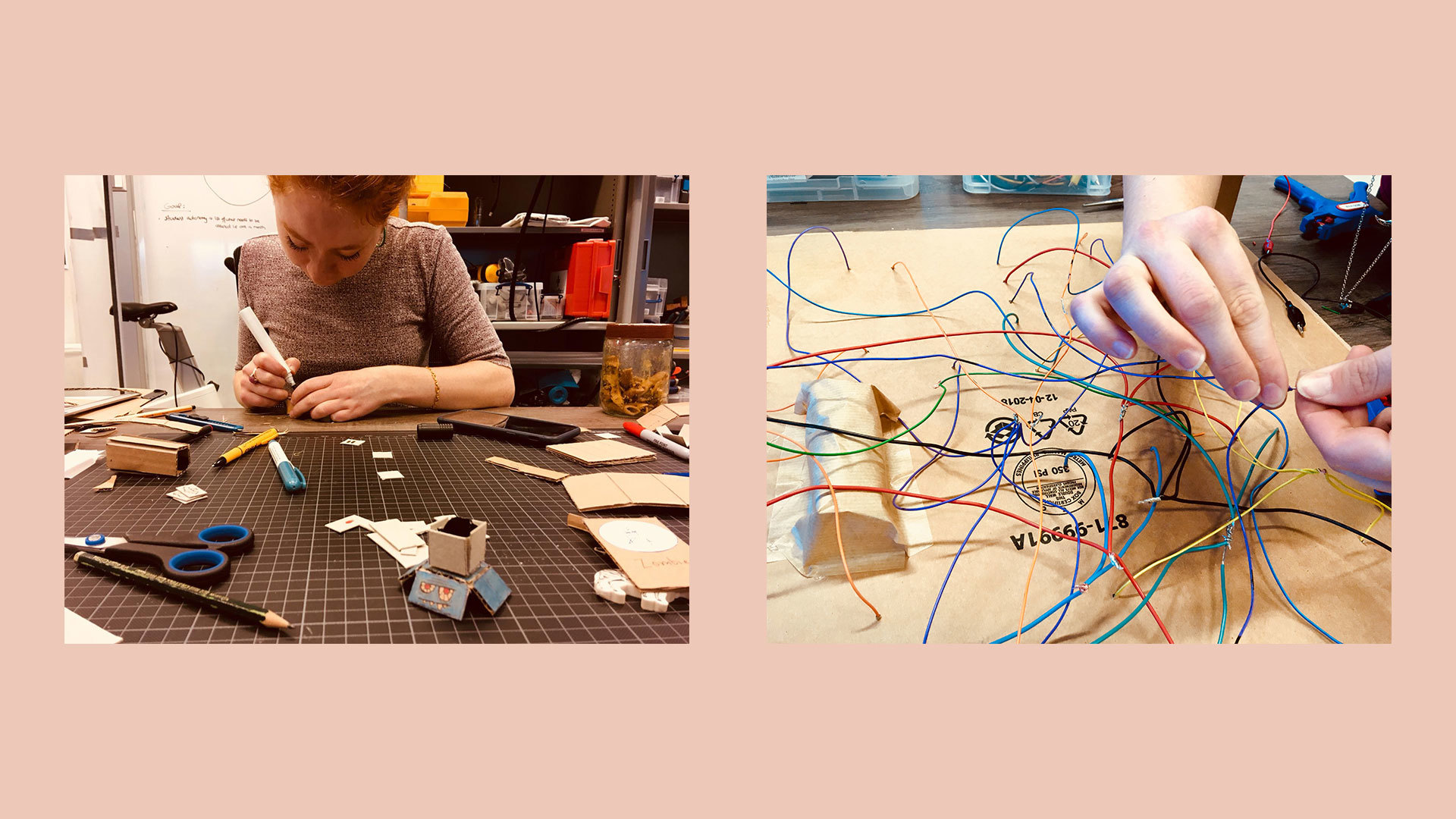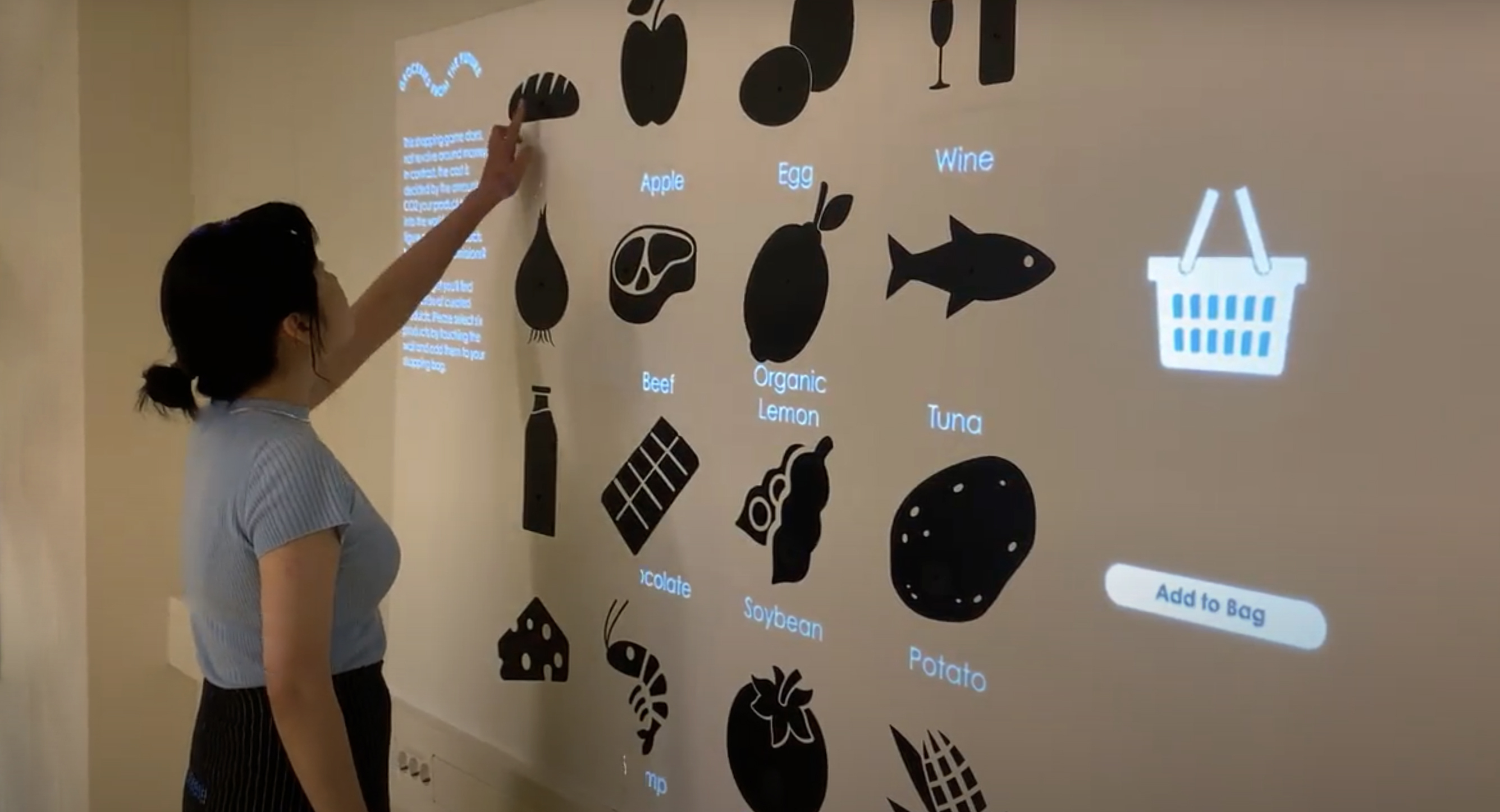
Zombies vs. Humans
An Interactive Sound Cardboard Board Game
-
Client:
Personal project
- Team:
-
Disciplines:
Game Design, Interaction Design, Experience Design
-
Schoolyear:
2019-2020
Sometimes, there’s no client or real brief; just a will to collaborate and develop new learning goals within our craft. This was that kind of project. MacKayla wanted to experiment with capacitive sensing. Katy wanted to build something tangible with an element of electronic interaction. And, Pam wanted to learn how to use and build interactive technology and explore its capabilities.
We began with a brainstorm session about what kind of interactive thing we could make using conductive paint. The idea to make a board game came to mind. We decided on a haunted house theme and then worked out the details of gameplay.

We were inspired by games like Frustration, where you can roll a die to move around the board and by landing on someone else's spot, it sends them back to the beginning. We liked this idea of being chased by something.

Our game is titled Zombies vs. Humans. It has four players, three humans and one zombie, that roll a die to move around the board. The objective of the humans is to collect three animals, a cat, rat, and bat, that are trapped in cages in the house and bring them to the designated safe zone. When all three animals are in the safe zone, the door "opens" for them to escape and the humans win the game. The zombie’s objective is to, of course, bite the humans and turn them into zombies.

How did we make it
We used materials from the MDD Lab to make all of the game elements. We tested the gameplay with our classmates and made iterations to the rules and the board design before adding the sound interaction. Then, we improved the physical design and painted the board with regular and conductive paint. We used a Bare Conductive TouchBoard to incorporate the sound interactions. We programmed 12 haunted and zombie sounds on the TouchBoard and selected squares to incorporate the audio.

What's a game without its challenges?
We ran into some challenges while adding the interactive sound element. The conductive paint was not as reliable as we hoped, and it required us to paint on multiple coats to work properly.
Another issue was that while the game board was conductive, our cardboard play pieces were not, and without some conductive material between the player's fingers and the conductive squares on the game board the sound would not be triggered. We solved this by stripping wires and running them down the sides and across the bottom of the play pieces so that when the player gripped the sides of the piece the wire would bridge the gap between their fingers and the conductive square. This works as long as the player takes care to hold the piece where the wire is.

Also, our wiring is quite makeshift, so sometimes we had disconnection problems. In the future, it would be best to solder the wires together instead of just connecting everything with alligator clips. But, it worked for our learning purposes now.
A gift to future students
We really enjoyed making this game! The gameplay itself is, surprisingly, very fun. It lives in the MDD Studio now and future students are welcome to play it anytime.

